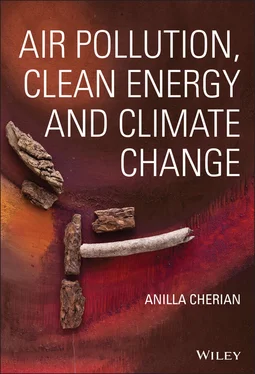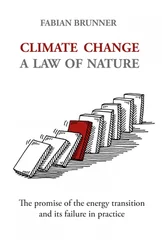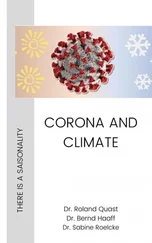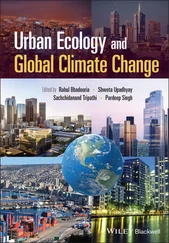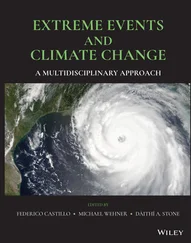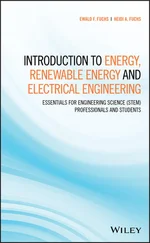Anilla Cherian - Air Pollution, Clean Energy and Climate Change
Здесь есть возможность читать онлайн «Anilla Cherian - Air Pollution, Clean Energy and Climate Change» — ознакомительный отрывок электронной книги совершенно бесплатно, а после прочтения отрывка купить полную версию. В некоторых случаях можно слушать аудио, скачать через торрент в формате fb2 и присутствует краткое содержание. Жанр: unrecognised, на английском языке. Описание произведения, (предисловие) а так же отзывы посетителей доступны на портале библиотеки ЛибКат.
- Название:Air Pollution, Clean Energy and Climate Change
- Автор:
- Жанр:
- Год:неизвестен
- ISBN:нет данных
- Рейтинг книги:5 / 5. Голосов: 1
-
Избранное:Добавить в избранное
- Отзывы:
-
Ваша оценка:
- 100
- 1
- 2
- 3
- 4
- 5
Air Pollution, Clean Energy and Climate Change: краткое содержание, описание и аннотация
Предлагаем к чтению аннотацию, описание, краткое содержание или предисловие (зависит от того, что написал сам автор книги «Air Pollution, Clean Energy and Climate Change»). Если вы не нашли необходимую информацию о книге — напишите в комментариях, мы постараемся отыскать её.
to leave no one behind
Air Pollution, Clean Energy and Climate Change
Energy and Global Climate Change
Air Pollution, Clean Energy and Climate Change — читать онлайн ознакомительный отрывок
Ниже представлен текст книги, разбитый по страницам. Система сохранения места последней прочитанной страницы, позволяет с удобством читать онлайн бесплатно книгу «Air Pollution, Clean Energy and Climate Change», без необходимости каждый раз заново искать на чём Вы остановились. Поставьте закладку, и сможете в любой момент перейти на страницу, на которой закончили чтение.
Интервал:
Закладка:
IPCC’s AR6 Working Group 1 SPM leaves little room for equivocation or doubt as to the global urgency of climate action. The climate response to a broader range of GHGs, land use and air pollutant futures than assessed in AR5 are considered consistently via five new emissions scenarios and include:
‘Scenarios with high and very high GHG emissions (SSP3‐7.0 and SSP5‐8.5) and CO2 emissions that roughly double from current levels by 2100 and 2050, respectively, Scenarios with intermediate GHG emissions (SSP2‐4.5) and CO2 emissions remaining around current levels until the middle of the century, and
Scenarios with very low and low GHG emissions and CO2 emissions declining to net zero around or after 2050, followed by varying levels of net negative CO2 emissions23 (SSP1‐1.9 and SSP1‐2.6)’ (2021, p. 15).
The SPM highlighted that: ‘Based on the assessment of multiple lines of evidence, global warming of 2°C, relative to 1850–1900, would be exceeded during the 21st century under the high and very high GHG emissions scenarios considered in this report (SSP3‐7.0 and SSP5‐8.5, respectively). Global warming of 2°C would extremely likely be exceeded in the intermediate scenario (SSP2‐4.5). Under the very low and low GHG emissions scenarios, global warming of 2°C is extremely unlikely to be exceeded (SSP1‐1.9), or unlikely to be exceeded (SSP1‐2.6)’ (2021, p. 18). Making assumptions about the global political will to move towards a very low and zero GHG emissions scenario currently strain credulity, but what needs to be publicly acknowledged is the scale of devastation that awaits millions across the world who lack the basic resources to adapt towards compounded climate, health and humanitarian crises.
Close to seven years after UN member states universally pledged to undertake ambitious action to implement the PA on climate change, it is long overdue time to ask what exactly is being done by the UN global community (including the global elite) to address the health and morbidity burdens that millions face at the harsh intersection between climate adversities and fossil fuel related air pollution. What set the 2015 PA apart from all prior UN climate resolutions and agreements was that it was the first inclusive, yet completely voluntary global climate change accord that covers all member states and therefore was markedly different from its parent treaty the 1992 UNFCCC and the 1997 KP to the UNFCCC. But, what this voluntary and non‐legally binding implementation of the PA means is that the scaling up of the PA’s commitments hinges entirely on the level of ‘ambition’ of the voluntary national pledges of climate action referred to as ‘independent Nationally Determined Contributions’ (NDCs). In other words, the future implementation record of global climate action within the PA depends entirely on the individual national commitments of the world’s largest aggregate GHG emitting countries. What is unambiguous, however, is that the implementation of the PA is directly linked to global efforts to reduce poverty, food insecurity and human rights inequities, as reflected in the introductory or ‘chapeau’ section of the PA: ‘Emphasizing the intrinsic relationship that climate change actions, responses and impacts have with equitable access to sustainable development and eradication of poverty… Acknowledging that climate change is a common concern of humankind, Parties should, when taking action to address climate change, respect, promote and consider their respective obligations on human rights, the right to health, the rights of indigenous peoples, local communities, migrants, children, persons with disabilities and people in vulnerable situations and the right to development, as well as gender equality, empowerment of women and intergenerational equity’ (UNFCCC 2015, p. 21).
The PA’s explicit recognition of the eradication of poverty, the right to health, along with the human rights and the rights of historically marginalized and vulnerable communities is critical in locating the argument that heavy reliance on polluting forms of solid fuels (biomass), and access to clean air should be considered as integral to and not separated from climate responsive actions. The PA entered into force on 4 November 2016 after ratification by three of the world’s largest aggregate GHG emitters – China, US and India. On 1 June 2017, the world’s second‐largest aggregate GHG emitter announced its decision to unilaterally withdraw from the PA and called for new negotiations. This call was rejected by several UN donor countries, including France and Germany who said that the PA ‘cannot be renegotiated’ (Stokols 2017). Meanwhile, the Foreign Minister of India (the world’s third‐largest aggregate GHG emitter) pushed back against the US claim that India’s ratification of the PA was ‘contingent upon receiving billions and billions and billions of dollars of foreign aid from developed countries’ by categorically stating: ‘India signed the Paris Agreement not because of any pressure or out of greed. We are committed to the environment and this commitment is 5,000 years old … I clearly dismiss both accusations’ (Indian Express 2017), But, India and China pushed back on the phrase ‘phase out’ in relation to coal and moved to replace it with ‘phase down’ in the recently concluded COP‐6 Glasgow deal. This move by India and China resulted in COP‐26 Chair, Alok Sharma stating that the deal struck in Glasgow was a ‘fragile win’ and that China and India would need to ‘justify their actions to nations that are more vulnerable to the effects of global warming’ (Cursino and Faulkner, 2021). The decades‐old reality that veterans of global climate change negotiations will attest to are that consensus‐based intergovernmental outcomes secured after two weeks of late‐night, back‐room discussions, are not governed by the need to protect the smallest and most vulnerable countries. Even before, the 2017 withdrawal of the US from the PA, the WEF highlighted the collective failure of the intergovernmental climate negotiations: ‘The risk of global governance failure which lies at the heart of the risk map, is linked to the risk of climate change. Negotiations on climate change mitigation and adaptation are progressing by fits and starts, perpetually challenged to deliver a global legal framework’ (WEF 2014, pp. 21–22).
Ciplet et al. (2015) demonstrated the international climate change policymaking arena has failed to act conclusively to fully address climate change. Harlan et al. (2015) provide compelling reasons for climate change being seen as a ‘justice issue’ given that marginalized communities and countries use considerably less fossil fuel energy while adverse climatic impacts are experienced vastly differently by the rich and poor as are climate responsive measures. As it turns out, the 2013 COP held in Warsaw, Poland, was sponsored by a range of energy polluting industries and ran alongside the International Coal Summit (which featured a keynote address by the then head of the UNFCCC) (Goodman 2013); and the 2018 COP was held in Katowice, also located in Poland and home to the largest coal mine in the European Union (EU) (Mathiesen 2017). Speaking to the 2018 Katowice COP assembly, the young Swedish climate change activist, Greta Thunberg provided a bleak assessment of UN climate negotiations: ‘We cannot solve a crisis without treating it as a crisis. We need to keep the fossil fuels in the ground, and we need to focus on equity … We have not come here to beg world leaders to care. You have ignored us in the past and you will ignore us again. We have run out of excuses and we are running out of time’ (Sutter and Davidson 2018). Speaking on 29 January 2019, Thunberg upped the urgency when she told yet another global assemblage gathered at WEF in Davos: ‘We are facing a disaster of unspoken sufferings for enormous amounts of people. And now is not the time for speaking politely or focusing on what we can or cannot say … I want you to panic. I want you to feel the fear I feel every day. I want you to act. I want you to act as you would in a crisis. I want you to act as if the house is on fire, because it is’ (WEF 2019b).
Читать дальшеИнтервал:
Закладка:
Похожие книги на «Air Pollution, Clean Energy and Climate Change»
Представляем Вашему вниманию похожие книги на «Air Pollution, Clean Energy and Climate Change» списком для выбора. Мы отобрали схожую по названию и смыслу литературу в надежде предоставить читателям больше вариантов отыскать новые, интересные, ещё непрочитанные произведения.
Обсуждение, отзывы о книге «Air Pollution, Clean Energy and Climate Change» и просто собственные мнения читателей. Оставьте ваши комментарии, напишите, что Вы думаете о произведении, его смысле или главных героях. Укажите что конкретно понравилось, а что нет, и почему Вы так считаете.
